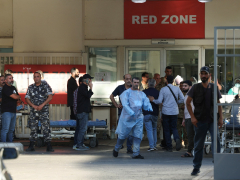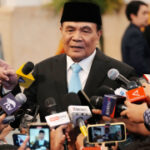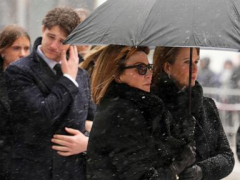On September 17, 2024, a series of small explosions echoed along many of Lebanon’s streets. The incident, which sparked confusion and terror throughout the country, came to be known as the pager attack – and was a definitive day in Israel’s war on Lebanon.
The attack wounded many operatives with connections to Hezbollah in Lebanon and Syria but also hurt and killed civilians, including two children.
What followed in the days, weeks and months after was a whirlwind of intensifying violence, political assassinations and mass displacement in Lebanon as Israel expanded a relatively controlled war with the Iran-backed, armed political group Hezbollah into an all-out assault on southern Lebanon, the Bekaa Valley in the east and Beirut.
One year on, the political reality on the ground has been flipped on its head. Hezbollah, which was first formed in 1982 to resist Israel’s occupation of southern Lebanon, is no longer the military and political force it had been in recent years. Now, a battle is under way to disarm the group altogether.
In its bid to achieve this, Israel has unleashed its military might on southern Lebanon and continues to occupy at least five points in the area, bringing back the trauma of its occupation from 1982 to 2000. Tens of thousands of people are still unable to return to their villages as a result.
On the first anniversary of the pager attack, this is a timeline of events in Lebanon’s difficult year under Israeli aggression and occupation:
In the months leading up to the attack, Israeli intelligence was able to place devices implanted with small explosives into Hezbollah’s pager supply chains.
When thousands of these pagers were detonated by Israeli operatives, more than 3,000 people were wounded – many lost body parts, eyes and hands mostly – and at least 12 people were killed.
“Every five to 10 seconds, I heard another [explosion],” 40-year-old Ali who was in Beirut’s southern suburbs when the attack took place told Al Jazeera the following day as he sat outside the American University of Beirut Medical Center.

September 18: Exploding walkie-talkies
The day after the pager attack, walkie-talkies with explosives embedded in them were detonated, striking further fear into the Lebanese public.
Twenty people were killed and more than 450 wounded in the attack that ostensibly targeted Hezbollah members but also counted civilians among the casualties.
Legal experts told Al Jazeera that the Israeli attacks violated international law.
“We seem to be living in a Netflix series or in a dystopia,” Lebanese political analyst Karim Emile Bitar said at the time.
In the following days, Israeli jets began flying low over Beirut, causing frequent sonic booms.
September 23: Deadliest day since Lebanese Civil War
Hezbollah and Israeli forces had been exchanging near-daily fire across the Lebanese border since the onset of Israel’s war on Gaza in October 2023. Until the week of September 23, these exchanges had been relatively controlled and followed certain rules of engagement.
Hezbollah mostly attacked military targets while Israel predominantly executed targeted strikes on Hezbollah operatives although civilians, including journalists, had been killed. Israel also targeted villages and towns in southern Lebanon with white phosphorus with the aim of creating a buffer zone between northern Israel and southern Lebanon that would be uninhabitable for local residents.
But on this day, the rules of engagement appeared to be set aside as Israel killed upwards of 500 people in Lebanon, marking the country’s deadliest single day since its 1975-1990 civil war, in the first of a series of air strikes.
Israel’s widespread bombing campaign continued on for more than two months, killing more than 3,000 people and displacing nearly a million, including thousands of foreign nationals and labourers.
September 27: Nasrallah assassinated, orders to evacuate
On the evening of September 27, residents of Beirut heard a ground-shaking explosion.
After initial confusion about where the explosion had occurred, the following day about noon, the news was announced: Israel had assassinated longtime Hezbollah Secretary-General Hassan Nasrallah by dropping about 80 bunker-busting bombs in an attack on Dahiyeh, in Beirut’s southern suburbs, killing at least 33 people.
Hours after the Nasrallah assassination but before the news had been confirmed, Israel issued displacement notices to residents of Beirut’s southern suburbs. Those with nowhere else to go fled to the city’s seafront as the first of two months of daily attacks and evacuation orders from Israel’s Arabic-language spokesperson began.
As those displacements became more frequent, human rights groups noted that Israel’s demands that Lebanese civilians leave those areas were violations of international law and Israel’s military was not upholding its responsibility under international law to avoid harming civilians.
September 30: First Israeli attack on Beirut
Israel killed three members of the Popular Front for the Liberation of Palestine (PFLP) in central Beirut’s Kola district in an air strike that took out an entire floor of an apartment building but left the rest of the building standing.
October 3: Safieddine assassination
Less than a week after Nasrallah was killed, so too was the man set to be his successor: Hashem Safieddine.
His death would not be confirmed for several days because any attempt to approach the scene of the air strike in the southern suburbs of Beirut was blocked by Israeli forces.
October 7: Firefighters killed by Israel
When Israel killed 10 f





